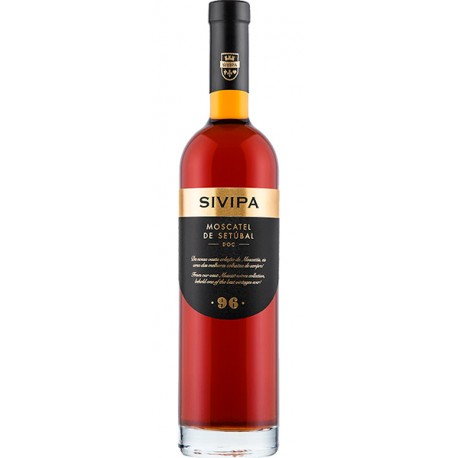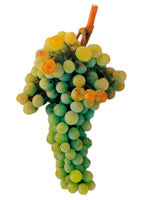 View larger
View larger
Moscatel Setubal 96, 1996
SVM06
New product
Topaz-colored wine with greenish reflections, with extraordinary power and very complex aromas due to its evolution, denoting hazelnuts, orange blossom and honey.
The palate is an unctuous with freshness.
Packaging: 500 ml bottle
More info
Premium Moscatel wine from 1996
Varieties: Moscatel de Setubal
Soil/Terroir: Clay and limestone
Average Age of Vines: 20 years
Pruning system: Integrated Production method, with maximum respect for the environment and soil
WINEMAKING: Prepared in deposits were grapes undergo a slight fermentation, and then added vinous spirit in order to block it.
Maceration lasts about 5 months.
AGEING: 17 years in old French oak barrels
ANALYSIS
Alcohol content: 17 % VOL
Total acidity: 4 g/l
Residual sugar: 180 g/l
Media Production: 6 hl/ha
Dry Extract: 290 gr/l
pH: 3.9
SERVING SUGGESTIONS: Serve at 8 ºC to 14ºC
Visual Appearance: Topaz color with greenish reflections
Appearance olfactory: Extraordinary power and very complex aromas due to its evolution, denoting hazelnuts, orange blossom and honey.
Appearance taste: The palate is an unctuous with freshness.
Enologist recommendations: Ideal as appetizer, dessert wine and with cheese.
Awards
- 93 pts Robert Parker, 2015
- Gold IWC London 2015
- Trophy IWC London Best Portuguese Moscatel 20
- Gold Medal and Best Moscatel de Setúbal - Palmela Concurso de Vinhos Engarrafados da CVR Setúbal, 2005
- Bronze medal IWC
The Grapes
 Moscatel de Setubal, Alexandria or Graúdo
Moscatel de Setubal, Alexandria or Graúdo
This variety is known to have originated in Egypt, having spread to the Mediterranean from Alexandria, possibly during the period of the Roman Empire (Galet 1985).
It is a grape of average strength and has a difficult flowering and fertilization, prone to not fruiting after flowering. Resistant to dryness, it's sensitive to mildew and powdery mildew.
There are various types of Moscatel in the world (ex. the French Muscat, the Italian Moscato), and all of them with a significant concentration of aromatic (terpene) and flavor components.
However, it's the Moscatel de Setubal that has the best concentration and richness of these components.
The typical aromas of Moscatel are well-known: citrus flowers and zest, honey, lime, rose, lychee, pear, date and raisin, which create memorable wines.
Setubal Region
The Setubal Peninsula is a unique region, whose wines are as generous and balanced as the region that sees them born.
Mother Nature was magnanimous and refined: from with the two peninsulas, “drawn” by the two largest estuaries in Portugal, was born a region rich in biodiversity and fish and shellfish with both natural and protected areas.
The framing by the Atlantic Ocean and the Tagus and Sado River estuaries, combined with a deep Mediterranean influence and geological formation provide a unique set of characteristics for wine production.
The Setubal Peninsula also has one of the oldest denominations in Portugal - the region of Moscatel de Setubal, whose demarcation was begun in 1907 and completed and confirmed in 1908.
The Setúbal DO (Denomination of Origin) region is geographically bounded by the municipalities of Setúbal, Palmela, Montijo and the village of Castelo in the municipality of Sesimbra.
This "terroir", which is the cradle of the Moscatel de Setubal is unique: the joint annual rainfall of 550-750 milliliters and the 2,200 hours of sunshine poured over the sandy and clay – limestone soils is all seasoned with a handful of Atlantic breeze.





